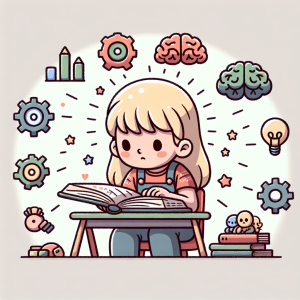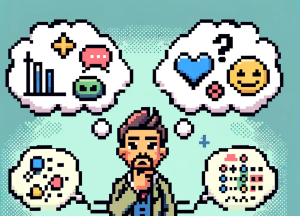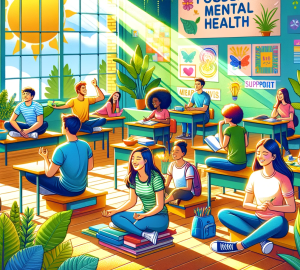
Why Outdoor Play Is a Hidden Superpower Against Student Burnout
A group of Chinese college students recently helped researchers prove something every teacher and parent has probably sensed: the outdoors heals more than we think. In a 2025 Frontiers in Psychology study, students who regularly took part in outdoor sports—anything from hiking to team games—reported far lower learning burnout than those who stayed indoors
But here’s the twist: it wasn’t just the exercise that made the difference. What really mattered were two invisible superpowers that outdoor activities built up—social support and self-regulation.
Burnout Is Sneaky—And It’s Spreading
“Learning burnout” might sound like a college problem, but it starts much earlier. Emotional exhaustion, loss of interest, and a sense of failure are showing up in middle and high school classrooms too. Kids (and adults) are juggling more pressure than ever: higher expectations, social comparison, endless screens, and shrinking time outside.
The study found that burnout isn’t simply about workload—it’s about how students recover from it. Those who engaged in outdoor sports experienced a measurable drop in stress, anxiety, and exhaustion. Why? Because time outside gives the brain and body a full-system reset—like hitting “refresh” after hours of multitasking.
How the Outdoors Boosts Mental Health
Outdoor sports did more than burn calories. They built the emotional muscles students need to thrive.
- Social Support: The “Invisible Safety Net”
Students who participated in outdoor activities reported stronger friendships, higher trust, and a deeper sense of belonging. When you’re on a trail, in a kayak, or even tossing a frisbee, you’re building what psychologists call protective social networks—relationships that buffer stress. For teens and young adults, feeling connected is one of the strongest predictors of resilience. - Self-Regulation: The “Inner Coach”
Outdoor experiences help students manage frustration, stay motivated, and recover from setbacks. These moments—navigating a muddy path, losing a game, or hiking through fatigue—are mini-lessons in emotional control. The study demonstrated that self-regulation served as a bridge between participation in outdoor sports and lower burnout. Students learned to calm themselves, set goals, and push through challenges. - The Power of Both
Here’s where it gets fascinating: social support and self-regulation worked together. Students who felt supported by their peers were more likely to develop strong internal coping skills. That combination—community and control—was the strongest shield against burnout.
Why This Matters Beyond College
Even though this study focused on university students, the takeaways apply to K–12 schools, families, and community programs everywhere. Mental health crises among young people are climbing, and traditional approaches—counseling, mindfulness, digital detoxes—often overlook one of the simplest tools we have: movement in nature.
- For teachers: Outdoor lessons, recess extensions, and walking groups can strengthen peer bonds and reduce classroom tension.
- For parents: Prioritize weekend hikes, backyard play, or bike rides. The key isn’t intensity—it’s consistency and connection.
- For schools: Integrate outdoor programs into health or advisory periods. Partner with local parks or nonprofits to make access equitable.
The Science Is Catching Up to Common Sense
Researchers call it “green exercise.” We might just call it being human. Spending time outside restores attention, balances mood, and helps students manage academic demands without feeling crushed by them. As the authors put it, outdoor sports are “a strategic component of student mental health”—not just recreation
And the data back it up:
- 70% of the benefit of outdoor sports came from indirect effects—boosting support and self-regulation rather than just physical fitness.
- Students who exercised outdoors reported significantly lower emotional exhaustion and greater motivation than peers who didn’t.
- Those effects were strongest in group-based activities, showing that connection is medicine.
Practical Takeaways: Small Steps, Big Impact
You don’t need a mountain trail or fancy gear to get started. Here are simple, evidence-backed ideas to bring this research to life:
- “Green breaks” between classes: Even five minutes outside can reset focus and mood.
- Outdoor Mentoring: Pair students or teachers for short walks to discuss goals, rather than sitting indoors.
- Nature challenges: Create weekly outdoor “quests”—such as counting birds, sketching trees, or journaling by a pond—to blend movement with mindfulness.
- Team-based service projects, such as clean-ups or community gardens, merge social connection, purpose, and exercise.
These are low-cost, high-return investments in student well-being.
Let’s Talk About It
What’s the biggest mental health challenge you see in your school today?
How can educators and parents collaborate to make outdoor time part of every child’s routine?
What would happen if we treated fresh air and friendship as mental health interventions?
Bottom line: If we want calmer classrooms, stronger students, and happier kids, we might need fewer screens and more sky. Outdoor play isn’t an afterthought—it’s therapy with sneakers on.



